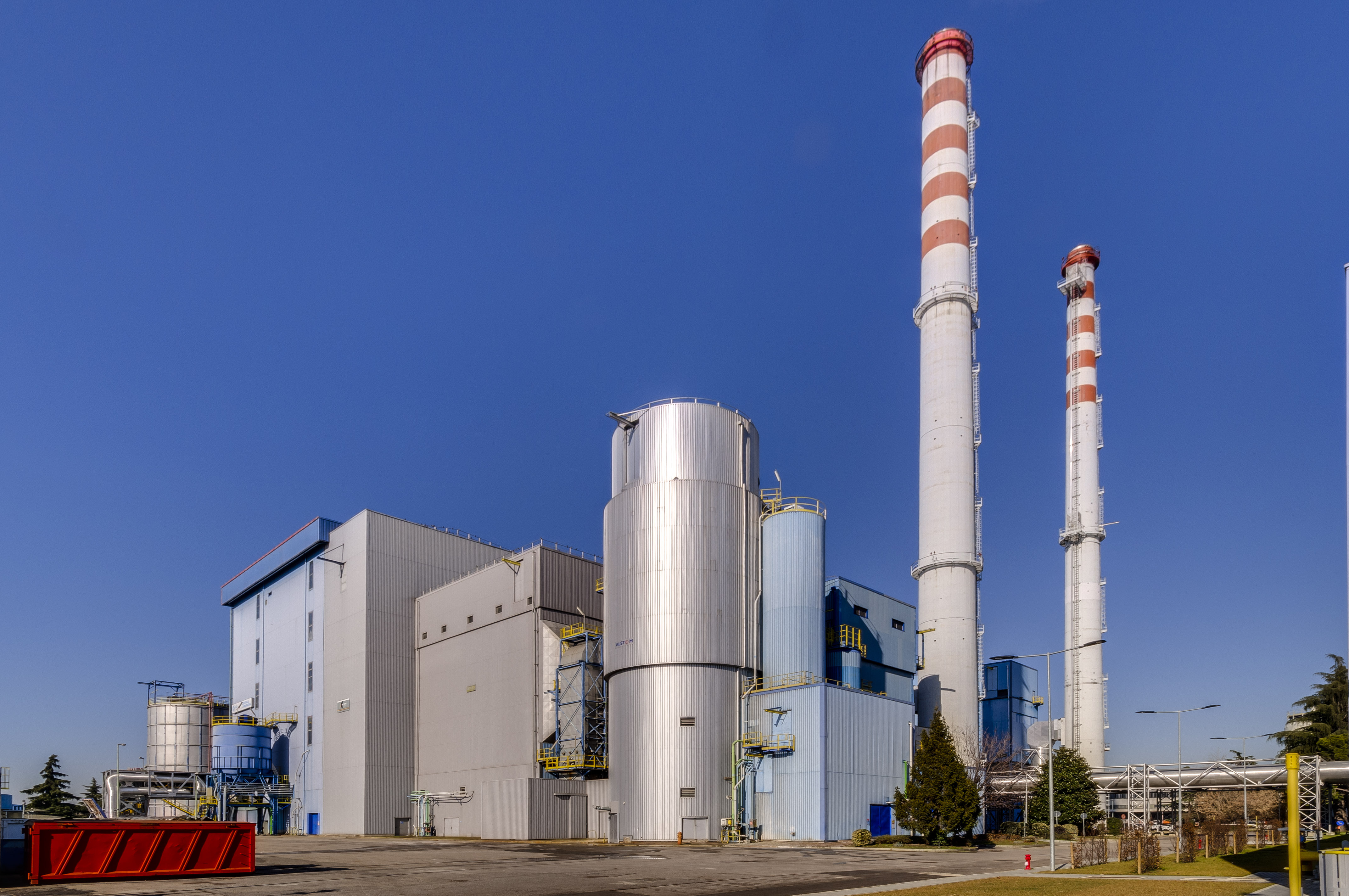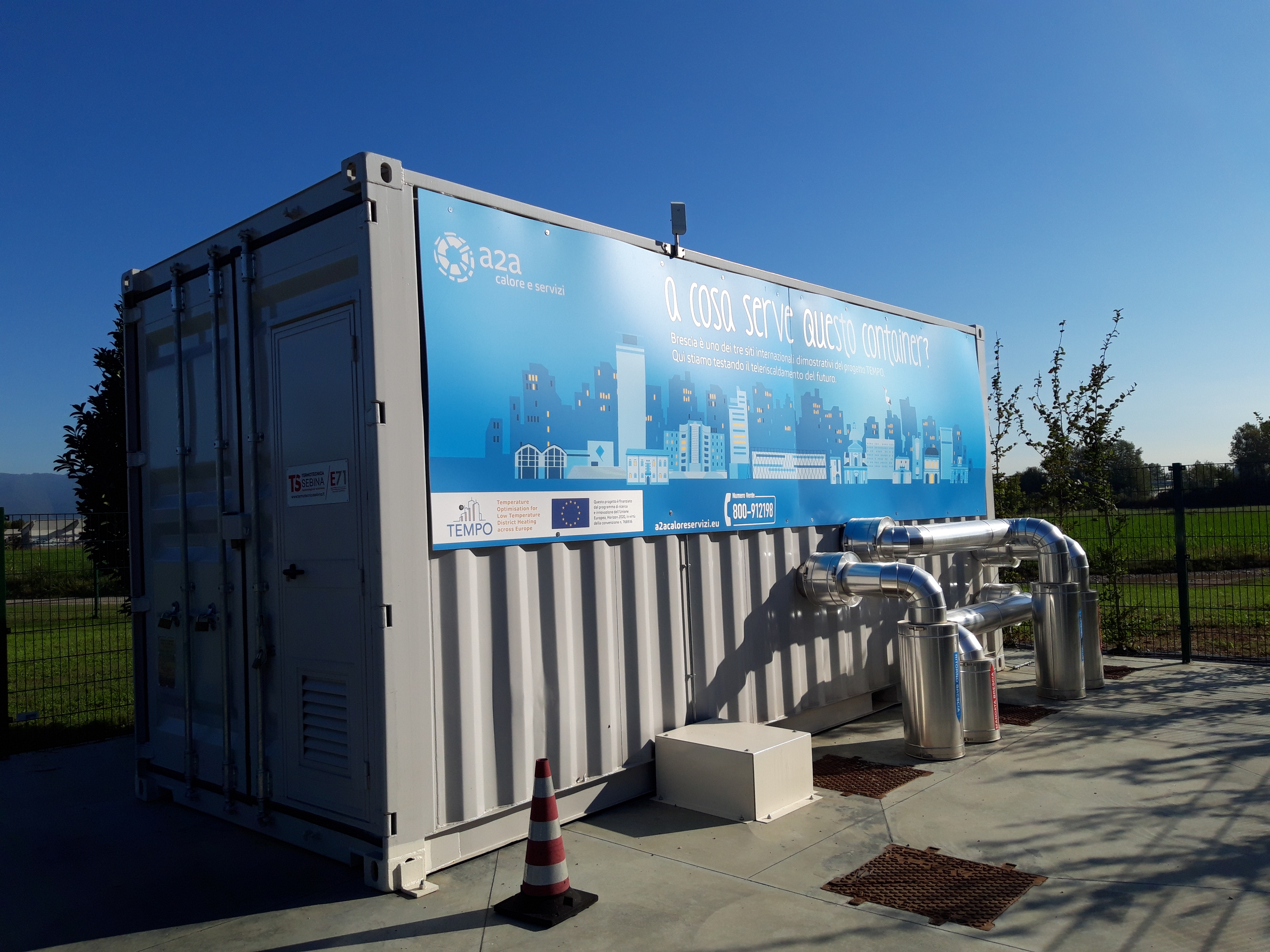
The DH system in Brescia, owned and operated by a2a Calore e Servizi, is one of the largest DH systems in Italy, with more than 1 TWh annual supply and covering about 70% of the town’s heat demand. The oldest part of the network started operating in 1972 and today more than 60% of the heat is produced by a waste-to-energy plant. The network delivers heat to more than 21.500 customers. The total trench length is 680 km.
Owing to the high operating temperatures, up to 130 °C in winter, the annual heat losses are rather high. For this reason, there is a high interest in reducing network temperatures, at least in low-density areas. The main bottlenecks to lower temperatures lie in the building side and depend typically on heat demand, heating systems, control function, connection size and customers’ behaviour.
The TEMPO demo site is located on a peripheral branch in the southern part of the network. The site includes 35 customers (1 large multi-family house and 34 single-family terraced houses) with a total contract capacity of about 700 kW. This site was selected considering also the large replicability potential since it is representative of several sites in Europe.
A successful temperature reduction reached through replicable solutions is expected to pave the way to a more competitive, more sufficient and sustainable district heating. Use of locally available low-temperature and low- or no-carbon sources could be easily integrated and become economically feasible once the system temperatures are lowered.
In this demo site, temperature reduction was demonstrated by integrating Solution package 3 and by engaging end customers. Solution package 3 consists of the following solutions:
• Supervision ICT platform;
• Visualisation tools;
• Smart DHC controller;
• Optimisation of building installation.

For the site preparation, a nearby area was qualified and a container hosting a supply-to-return mixing station was installed. Here, the high-temperature supply water from the main network is mixed with the return (in a ratio depending on the ambient temperature) to get a lower-temperature supply to the demo site.
Sensors to monitor the indoor temperatures were placed in some buildings and hardware tools communicating with a cloud were installed to transmit the operating data and enable the smart control.
The temperature reduction started on January 2020. The first results demonstrated that reducing the site supply temperature by 15 °C is technically feasible and it does not compromise heat supply. Customer engagement was an important and successful step for the acceptance of lower supply temperature and the sensor installation in the buildings. The engagement activities included delivery of letters, flyers and a public assembly with customers and local authorities.
The final results are described in the latest report, available at this link: D4.3 Integrated Improved Innovations in a2a Network.
For the heating season 2021/2022, an additional effort for a further temperature reduction of both supply and return lines was carried out. It included actions of the smart controller on both the primary and secondary sides. The performance report can be found here: D5.3 Performance Assessment Report (2021-22).



